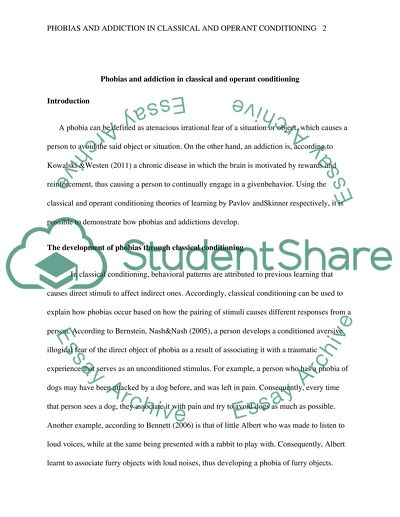Phobias and addiction Essay Example | Topics and Well Written Essays - 750 words. Retrieved from https://studentshare.org/psychology/1489660-phobias-and-addiction
Phobias and Addiction Essay Example | Topics and Well Written Essays - 750 Words. https://studentshare.org/psychology/1489660-phobias-and-addiction.


